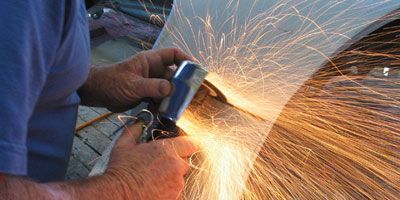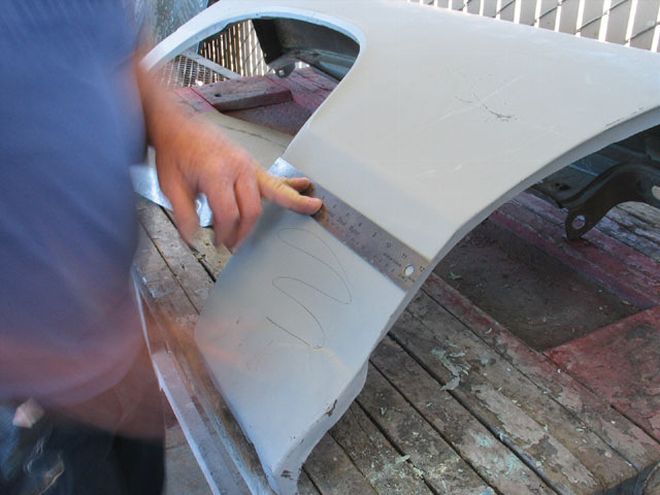
'There's never been a better time to restore older musclecars than right now. Entire '69 Camaros are being reproduced, but that doesn't mean that original sheetmetal should be trashed. Original tin is still considered good as gold, so when it came time to resurrect our midwestern-rusted '66 Chevelle's front fenders, we could have gone the repop route with brand-new reproductions. But instead, the fenders were good enough to warrant saving.
We enlisted the help of Mike Paradis, an instructor at West Valley Occupational Center in Woodland Hills, California, which is part of the Los Angeles Unified School District and offers many classes for any student 16 years or older. The class Paradis teaches is the Auto Body Repairer/Fundamentals course, which provides the basics of bodyworking skills and is run as part of the Industrial Technology Education department.
Paradis showed us how to do a simple patch installation on one of our fenders, but we'll be back in later issues with other solid repairs you can do with just the aid of a few simple bodyworking tools and a little bit of fabricating skill.
Continuing Education
We'd like to thank the West Valley Occupational Center Principal Richard Wormus, Vice Principal Henry Castillo, and instructor Mike Paradis for allowing us access to the school's autobody repair program. While you can learn quite a bit just by doing, every state and large municipality has post-high school educational programs that offer classes in many different fields, not just bodywork. The fees are generally affordable, and in most cases all you have to supply are your own consumables such as sandpaper, cutoff wheels, and paint. The Internet is the best place to look for programs in your local area, so don't be afraid to take a class.

Paradis used a straightedge to mark cut lines in the original fender for removing the rust and leaving only solid metal. To make the repair easier to accomplish, he cut roughly 11/44 inch inside the fender edge next to the door and the same distance inside the fender lip to preserve these complex, curved surfaces. This also improves structural strength. He also retained the bottom edge of the fender even though it was heavily rusted. The patch panel did a good job of reproducing the lower edge, including the rectangular opening for the fender bolt.